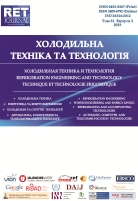AUTHORIZATION FOR AUTOMOBILE HEADUNIT WITHOUT BROWSER SUPPORT WITH MOBILE DEVICES THROUGH BLUETOOTH
DOI:
https://doi.org/10.15673/0453-8307.2/2015.35890Keywords:
Authorization Method – Headunit – OAuth – REST API – Smartphone – iOS – AndroidAbstract
Along with the crucial growth of information-technologies the communicability of the society is rapidly developing. Multiple social networks is the brightest example of this fact. All automobiles manufacturers strive to provide embedded computers with access to the Internet, but some embedded computers does not have a built-in browser. To solve the problem of applications authorization protocol OAuth was created, the aim of which is to enter Web-browser accounting data. This paper describes the implementation of the OAuth realization solution for embedded computers that do not have browser support.
All social networks such as Facebook, Twitter, Google+, Foursquare, Evernote, VK provide WEB REST API which allows to create native application easily for any platform which have internet access.
The communication is going through Bluetooth. As access to internet is implemented via Bluetooth protocol there won’t be technical difficulties to use the app. This method could be implemented as for iOS (headunit is needed to be MFI certified) or for Android.
This paper describes the solution of implementing OAuth for headunits which without browser support.References
E. Hammer-Lahav (ed.). The OAuth 1.0 Protocol. IETF RFC 5849 (Informational), April 2010. http://tools.ietf.org/html/rfc5849.
Jim Basney and Jeff Gaynor An OAuth Service for Issuing Certificates to Science Gateways for TeraGrid Users, National Center for Supercomputing Applications University of Illinois at Urbana-Champaign 1205 West Clark Street, Urbana, Illinois 61801.
Chetan Bansal, Karthikeyan Bhargavan, Antoine Delignat-Lavaud, Sergio Maffeis. Discovering Concrete Attacks on Website Authorization by Formal Analysis, April 2013.
OAuth 2.0: The Definitive Guide O'Reilly Media; 1 edition (25 Jun 2014) ISBN-10: 1449319319.
Jim Webber, Savas Parastatidis, Ian Robinson REST in Practice Hypermedia and Systems Architec-ture By O'Reilly Media September 2012.
Leonard Richardson, Sam Ruby RESTful Web Services Web services for the real world O'Reilly Me-dia May 2011.
LeBlanc J. - Programming Social Applications: Building Viral Experiences with OpenSocial, OAuth, OpenID 2011.
Masse Mark. REST API Design Rulebook O'Reilly Media, 2013.
T. Bray, Ed., The JavaScript Object Notation (JSON) Data Interchange Format, IETF RFC 7159, March 2014, http://tools.ietf.org/html/rfc7159.
R. Fielding, J. Reschke, Hypertext Transfer Pro-tocol (HTTP/1.1): Message Syntax and Routing, IETF RFC 7230, June 2014.


